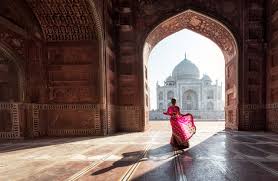
India is not just a country; it’s a living museum of history, art, tradition, and culture. With over 5,000 years of civilization, India’s cultural fabric is one of the richest in the world. From intricate temple carvings to vibrant dance forms and colorful festivals to timeless rituals, the subcontinent offers a treasure trove of cultural experiences for curious travelers.
This India travel guide takes you on a journey through the heart of the nation’s heritage, arts, and traditions, helping you uncover the deeper essence of India that goes far beyond typical sightseeing.
Table of Contents
Discovering India’s Cultural Diversity
India is a mosaic of cultures shaped by centuries of dynasties, invasions, and migrations. The country is divided into 28 states and 8 union territories, each with its unique language, attire, cuisine, and customs. This diversity makes India a fascinating destination for cultural travelers.
Whether you’re witnessing a Kathakali performance in Kerala or exploring Mughal architecture in Delhi, India constantly reveals new layers of its identity. A good India travel guide should focus not just on destinations, but on immersive cultural experiences.
Architectural Heritage: Living Monuments of History
India’s architectural heritage tells stories of empires, religions, and artistry. Here are a few highlights:
1. North India – Mughal and Rajput Glory
- Taj Mahal (Agra): A UNESCO World Heritage Site and a symbol of eternal love, the Taj is a masterpiece of Mughal architecture.
- Jaipur and Udaipur: The palaces and forts in Rajasthan reflect Rajput valor and grandeur. Amber Fort, Hawa Mahal, and City Palace are must-visits.
2. South India – Dravidian Temples
- Madurai Meenakshi Temple and Thanjavur’s Brihadeeswarar Temple: These temples are architectural marvels with detailed carvings and towering gopurams.
- Hampi and Mahabalipuram: These ancient cities showcase India’s temple-building heritage and spiritual history.
3. East & Northeast – Tribal and Colonial Influences
- Kolkata’s colonial charm and Assam’s monasteries offer a blend of European and indigenous traditions.
4. West India – Caves and Coastal Forts
- Ajanta & Ellora Caves (Maharashtra): These rock-cut caves are adorned with frescoes and sculptures reflecting Buddhist, Hindu, and Jain themes.
Indian Arts: A Kaleidoscope of Expression
Art in India is not just for galleries—it’s woven into daily life, festivals, rituals, and performance.
Dance and Music
- Classical Dance Forms: Bharatanatyam, Kathak, Odissi, Manipuri, and Mohiniyattam are just a few of the many Indian classical dances, each tied to specific regions and spiritual stories.
- Music: From the soul-stirring ragas of Hindustani classical music in the north to the rhythmic beauty of Carnatic music in the south, India’s musical heritage is vast and nuanced.
Handicrafts and Textiles
- India’s rich tradition of handcrafting includes:
- Pashmina shawls from Kashmir
- Madhubani paintings from Bihar
- Chikankari embroidery from Lucknow
- Block printing from Rajasthan
- Pashmina shawls from Kashmir
These are not just products but legacies of local artistry passed down through generations.
Cinema and Literature
- Bollywood, based in Mumbai, is one of the largest film industries globally and an integral part of modern Indian culture.
- Indian literature spans from ancient Sanskrit epics like the Mahabharata to contemporary works by authors like Arundhati Roy and Jhumpa Lahiri.
Traditions and Festivals: Celebrations of Life
No India travel guide is complete without highlighting the country’s festivals and traditional practices. These events are rooted in religious beliefs, agricultural cycles, and ancient myths.
Major Festivals
- Diwali: The Festival of Lights, celebrated across India, symbolizes the victory of light over darkness.
- Holi: The colorful festival of joy and love, marking the arrival of spring.
- Eid, Christmas, and Guru Nanak Jayanti: India’s multicultural society celebrates all major religious festivals with equal enthusiasm.
- Navratri & Durga Puja: Nine nights of music, dance, and devotion, especially vibrant in Gujarat and West Bengal.
Attending a local festival offers one of the most authentic glimpses into Indian traditions and community spirit.
Cultural Etiquette and Travel Tips
When traveling through culturally rich regions, a few etiquette tips can make your journey smoother:
- Dress modestly, especially when visiting religious sites.
- Remove shoes before entering temples, mosques, or homes.
- Use your right hand for eating and exchanging items.
- Be open and respectful of local customs and languages, even if they’re unfamiliar.
Most locals appreciate curiosity and politeness and will go out of their way to help a respectful traveler.
Regional Highlights for Cultural Travel
Here’s a quick overview of what each region offers for culture seekers:
- North India: Mughal history, grand forts, classical music, yoga ashrams (Rishikesh, Varanasi).
- South India: Ancient temples, traditional dance (Bharatanatyam, Kathakali), vegetarian cuisine.
- East India: Folk music, tribal cultures, tea plantations, Durga Puja.
- West India: Desert festivals, textile traditions, spiritual centers like Mount Abu.
- Northeast India: Indigenous tribes, bamboo crafts, unique festivals (Hornbill Festival in Nagaland).
Conclusion
India is more than a destination—it’s an immersive cultural experience that evolves with every city, village, and ritual. Whether you are tracing ancient heritage through its temples and forts, enjoying a folk dance under the stars, or participating in a local festival, India will open your eyes to a world of artistic and spiritual depth.
This India travel guide only scratches the surface of what the country has to offer. But it serves as a reminder that India’s culture isn’t confined to museums—it’s alive, dynamic, and waiting to be discovered by every traveler willing to go beyond the usual path.
So pack your curiosity, keep an open heart, and prepare to explore one of the richest cultures on Earth.














